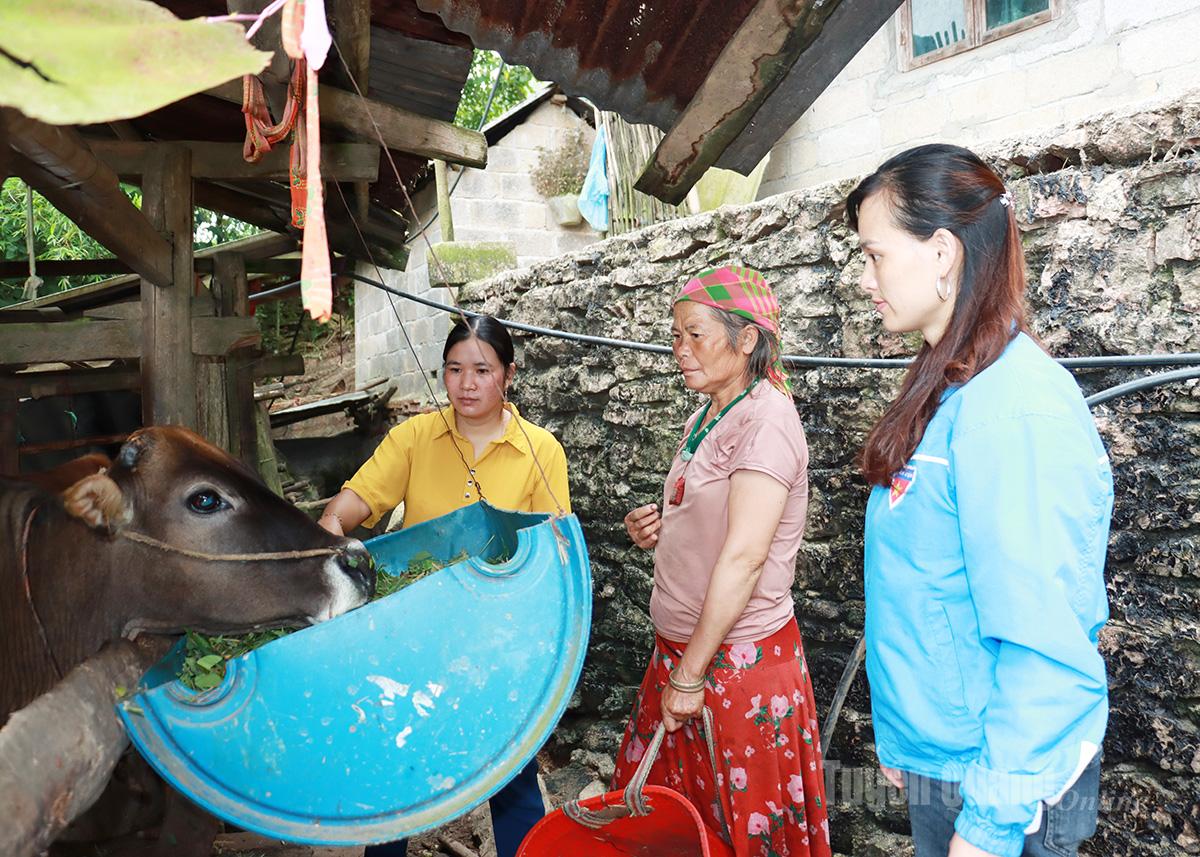Son Vi makes breakthroughs through crop and livestock restructuring
Once an economically disadvantaged commune facing harsh natural conditions, Son Vi commune has made remarkable progress by restructuring its crop and livestock sectors, thereby improving local livelihoods.
 |
| Vu Thi Chia’s family in Lung Thung hamlet, Son Vi commune improves their income thanks to raising cows. |
In recent years, Son Vi has focused on developing livestock farming on a commercial scale, considering it a sustainable solution for poverty reduction. Local authorities have encouraged households to build solid barns, expand their herds of cattle, goats, and buffaloes, make use of idle land to grow forage grass, and strengthen veterinary and disease prevention work. Currently, the commune has more than 17,000 head of livestock and poultry; many models of cattle breeding and pig and chicken farming have proved effective, helping households earn stable incomes.
Alongside livestock development, the commune has actively restructured crops toward commodity production. Over 3,200 hectares of annual crops have been cultivated, with many low-yield maize areas converted to higher-value crops such as vegetables, fruit trees, and medicinal plants like pear, plum, amomum, turmeric, and ginger. These changes have helped farmers increase their income compared to before.
Son Vi has also effectively implemented national target programs on poverty reduction, new rural development, and livelihood creation. By September 2025, the commune had completed the elimination of 745 temporary and dilapidated houses and created jobs for 1,732 workers, an increase of 500% of the annual plan.
Currently, Son Vi’s per capita income has reached VND26 million per year, an increase of nearly VND9 million compared to 2020. The commune aims to raise this figure to over VND38 million per person by 2030, with an average poverty reduction rate of 5% per year.
Tran Ke





READER COMMENTS